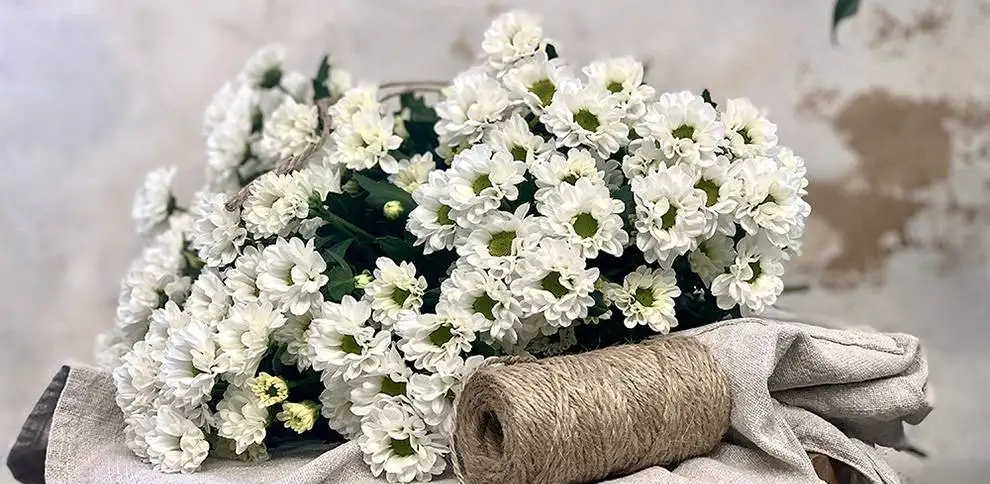Natural beauty without unnecessary embellishments, that's santini
01.09.2023 | Dana Rohová

Everyone knows chrysanthemums, some people love them, others don't like them and think they belong in mourning bouquets. But there is no such thing as a chrysanthemum, some have a few large flowers, others have a few small ones. When it comes to the latter, did you know that it is the santini chrysanthemum that adds a touch of naturalness to any bouquet?
The chrysanthemum is native to China and Japan
Chrysanthemums, also known as November flowers or soul flowers, have earned a reputation as a funeral flower that is not only placed on graves during the season of the soul. It is not clear why this is so, but the chrysanthemum can also be described as the queen of autumn. It is available in many colours and can last up to 3 weeks in a vase with the right care. Its homeland is China and Japan, where they are still considered the national flower. There are over 5,000 species of chrysanthemum in the world. These are divided into subgroups according to the size and number of flowers on:
- Single-flowered chrysanthemums, which are traditional, ornamental and fit into many bouquets. They can also be placed individually in a vase.
- Multi-flowered chrysanthemums come in many shades, including unusual colours and patterns. They are most often included in round bouquets.
- Chrysanthemums santini, which one falls in love with at first sight. They are delicate, cute and available in many colours including green, white, pink, yellow etc. White santini can resemble chamomile, while green is suitable as a bouquet filler.
Chrysanthemums have been grown in Europe since about the 18th century, when it comes to santini it is important to remember that this is not a natural subset of chrysanthemums but a bred one. Chrysanthemums came to the Czech Republic thanks to František Josef Thomayer, who was instrumental in breeding them in this country.
Did you know that the name chrysanthemum comes from the Greek chrys (golden) and athemion (flower)? Gold is the original colour of the chrysanthemum, it is also the symbol of Japanese emperors and adorns their throne. In addition, it is also found on the national emblem of Japan or on the imperial seal.
How to care for santini?
Every flower requires some care. This will enhance its beauty and longevity. This is no different for santini, but you may be surprised by a few differences compared to other types of flowers. While it is usually recommended to change the water every other day and cut the stems, this is different for santini and chrysanthemums in general.
We do not change the water, but only top it up, and we do not cut the stems, either obliquely or otherwise. It is simply broken off or crushed so that it can take up water more easily and in greater quantity.
Otherwise, the care is the same, that is to say, before putting the santini in the vase, we remove any leaves that might rot in the water and we remember to add (and mix well) the cut flower food to the water. This will promote their freshness and longevity by preventing bacteria from multiplying in the water.
Santini is not only suitable for meadow ties
Since santini adds a natural touch to bouquets, it is a great addition to any bouquet, not just meadow ones. It can be combined with many other flowers, including gerberas, roses and other chrysanthemums. Although the bouqet will add a touch of naturalness to the bouquet, they will not attract much attention.
Our tip. Order flower delivery Havířov, Olomouc, Prague or any city or village in the Czech Republic.
In addition to cut santini in a vase, you can also enjoy them in the garden. They will brighten it up with all kinds of colours, the places where you can plant them include not only the flower bed, but also the lawn, they will stand out even around the sidewalk.


